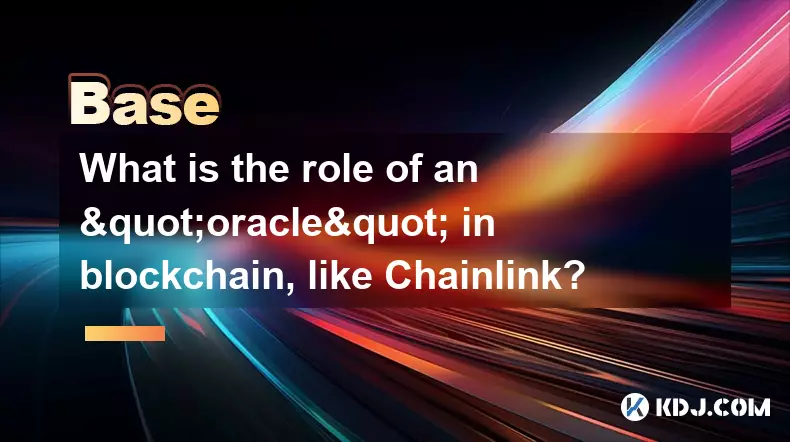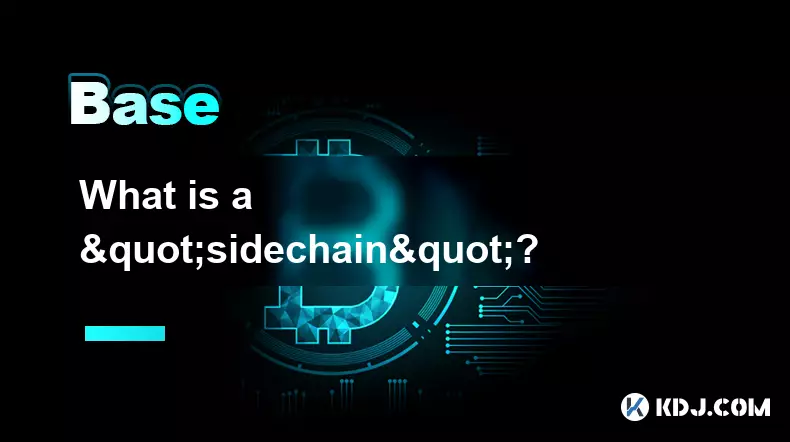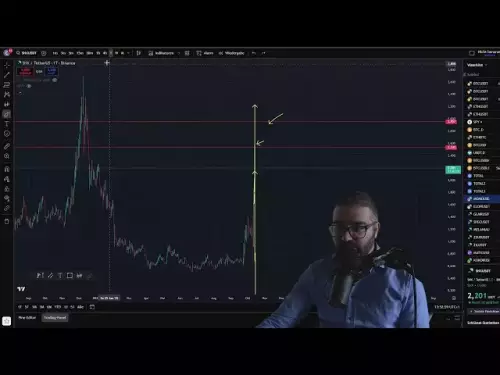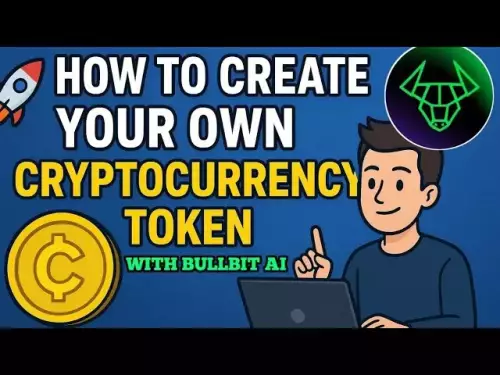-
 bitcoin
bitcoin $115692.075601 USD
5.13% -
 ethereum
ethereum $4162.931611 USD
11.68% -
 bnb
bnb $1310.063287 USD
17.56% -
 tether
tether $1.000983 USD
0.00% -
 xrp
xrp $2.534505 USD
8.16% -
 solana
solana $198.235737 USD
13.49% -
 usd-coin
usd-coin $1.000236 USD
0.02% -
 dogecoin
dogecoin $0.207352 USD
12.89% -
 tron
tron $0.323043 USD
3.62% -
 cardano
cardano $0.701559 USD
11.88% -
 hyperliquid
hyperliquid $39.924597 USD
8.30% -
 chainlink
chainlink $18.934457 USD
11.56% -
 ethena-usde
ethena-usde $1.000552 USD
0.02% -
 stellar
stellar $0.340575 USD
7.05% -
 bitcoin-cash
bitcoin-cash $545.011757 USD
8.86%
What is the role of an "oracle" in blockchain, like Chainlink?
Blockchain oracles like Chainlink bridge smart contracts with real-world data, enabling decentralized apps to access trusted off-chain information securely and reliably.
Oct 11, 2025 at 08:54 pm

Understanding Blockchain Oracles
1. A blockchain oracle serves as a bridge between the blockchain and the outside world. Smart contracts on networks like Ethereum can only execute based on data stored within the blockchain itself. However, many real-world applications require information from external sources such as weather data, stock prices, or sports results. Oracles fulfill this need by fetching off-chain data and delivering it to smart contracts in a secure and reliable manner.
2. Without oracles, decentralized applications (dApps) would be limited to internal blockchain data, severely restricting their functionality. For instance, an insurance dApp that pays out when a flight is delayed needs access to real-time flight status—information not natively available on the blockchain. An oracle retrieves this data from airline APIs and feeds it into the smart contract for execution.
3. Oracles do not just provide data; they verify its authenticity and ensure consistency across multiple sources. This verification process is critical because inaccurate or manipulated data could lead to incorrect contract executions, resulting in financial losses or system failures.
4. Chainlink is one of the most widely adopted decentralized oracle networks. It operates by connecting smart contracts with various data providers through a network of independent node operators. These nodes retrieve data, aggregate it, and submit it to the blockchain, reducing reliance on any single source and minimizing the risk of manipulation.
5. The security model of Chainlink relies on cryptographic proofs, reputation systems, and economic incentives. Node operators must stake LINK tokens as collateral, which can be slashed if they provide false or unreliable data. This creates a trust-minimized environment where participants are financially incentivized to act honestly.
The Decentralization Advantage
1. Centralized oracles pose a significant risk because they represent a single point of failure. If compromised, they can feed malicious data into smart contracts, leading to exploits. Decentralized oracle networks like Chainlink mitigate this by distributing data retrieval and validation across multiple independent nodes.
2. Chainlink uses a multi-layered approach to decentralization. Data sources, node operators, and aggregation methods are all diversified. This ensures that no single entity controls the flow of information, enhancing the resilience and reliability of the system.
3. By aggregating responses from numerous nodes, Chainlink computes a weighted median or average, filtering out outliers and reducing the impact of potentially faulty or dishonest submissions. This statistical method increases data accuracy without requiring full consensus among all participants.
4. The network supports customizable oracle configurations, allowing developers to set specific requirements for data sources, update frequency, and security parameters. This flexibility enables tailored solutions for different types of dApps, from financial derivatives to supply chain tracking.
5. Cross-chain interoperability has expanded Chainlink’s role beyond Ethereum. It now supports multiple blockchains including Polygon, Binance Smart Chain, and Avalanche, enabling consistent data delivery across ecosystems and supporting the growth of omnichain applications.
Real-World Applications of Oracles
1. In decentralized finance (DeFi), oracles are essential for price feeds. Lending platforms like Aave and Compound use Chainlink to obtain accurate asset prices, which determine collateral values and liquidation thresholds. Reliable pricing prevents undercollateralized loans and maintains system solvency.
2. Insurance protocols leverage oracles to automate claims processing. Parametric insurance products, such as drought coverage for farmers, trigger payouts when verified weather data confirms predefined conditions. This eliminates manual assessment and speeds up disbursements.
3. Gaming and NFT platforms use oracles to introduce randomness and fairness. Verifiable random functions (VRFs) provided by Chainlink enable tamper-proof lottery systems, loot box distributions, and rare item generation, ensuring transparency and user trust.
4. Supply chain dApps integrate oracles to track goods using IoT sensors and logistics APIs. When shipment temperature exceeds safe levels, the oracle reports this to a smart contract, which can automatically initiate penalties or refunds, enforcing contractual obligations without intermediaries.
5. Prediction markets rely on oracles to settle outcomes. Platforms like Augur use them to confirm event results—such as election winners or sports scores—enabling correct payout distribution based on real-world occurrences rather than subjective judgments.
Frequently Asked Questions
What makes Chainlink different from other oracle services?Chainlink stands out due to its fully decentralized architecture, extensive node network, and robust security model. Its ability to customize oracle setups and support multiple blockchains gives it an edge over centralized or less flexible alternatives.
Can oracles themselves be hacked?While no system is entirely immune, decentralized oracles reduce attack surfaces significantly. Chainlink mitigates risks through node redundancy, data aggregation, staking mechanisms, and encryption. Attacks would require compromising a large portion of the network simultaneously, making them economically unfeasible.
How do smart contracts verify oracle-provided data?Smart contracts don't independently verify raw data. Instead, they trust the oracle network's design—reputation systems, stake-backed guarantees, and consensus-based aggregation—to ensure data integrity before execution.
Are there costs associated with using Chainlink oracles?Yes, developers pay node operators in LINK tokens to request data. The cost varies depending on the complexity of the query, update frequency, and security level required. These payments incentivize reliable service and cover operational expenses.
Disclaimer:info@kdj.com
The information provided is not trading advice. kdj.com does not assume any responsibility for any investments made based on the information provided in this article. Cryptocurrencies are highly volatile and it is highly recommended that you invest with caution after thorough research!
If you believe that the content used on this website infringes your copyright, please contact us immediately (info@kdj.com) and we will delete it promptly.
- XRP Price Prediction: Weekend Rollercoaster or Rally?
- 2025-10-12 08:45:16
- Bittensor (TAO): Super Bullish Signals Point to Potential 2x Rally
- 2025-10-11 10:25:12
- Silver Price Correction: Navigating the Dip & Identifying Key SEO Keywords
- 2025-10-11 10:25:12
- Decoding Crypto Trends: Bittensor's Bull Run, Cardano's Dip, and LivLive's Presale Buzz in 'Uptober 2025'
- 2025-10-12 08:45:16
- MoonBull: The Crypto Meme Coin Promising 1000x Gains?
- 2025-10-11 10:30:01
- Crypto Payroll Revolution: Stablecoins, Altcoins, and the Future of Salary Payments
- 2025-10-11 10:30:01
Related knowledge

What does it mean for code to be "open source" in crypto?
Oct 12,2025 at 01:54pm
Understanding Open Source in the Cryptocurrency Ecosystem1. In the context of cryptocurrency, open source refers to software whose code is publicly ac...

What is the purpose of a "testnet"?
Oct 12,2025 at 09:01am
Understanding the Role of Testnets in Blockchain Development1. A testnet serves as a parallel version of a blockchain network, designed specifically f...

How to avoid phishing scams in crypto?
Oct 13,2025 at 06:18pm
Understanding Common Crypto Phishing Tactics1. Cybercriminals frequently use fake websites that mirror legitimate crypto exchanges or wallet platforms...

What is the difference between single-collateral and multi-collateral Dai?
Oct 12,2025 at 05:18pm
Understanding Single-Collateral Dai1. Single-Collateral Dai (SCD) was the original version of the Dai stablecoin launched by MakerDAO in 2017. It allo...

What is a "sidechain"?
Oct 13,2025 at 02:36pm
Understanding the Concept of Sidechains1. A sidechain is a blockchain that operates independently but is connected to another blockchain, known as the...

What is "EIP-1559" and how did it change Ethereum?
Oct 12,2025 at 03:00am
Understanding EIP-1559 and Its Core Mechanism1. EIP-1559 is a protocol upgrade introduced to the Ethereum blockchain as part of the London hard fork i...

What does it mean for code to be "open source" in crypto?
Oct 12,2025 at 01:54pm
Understanding Open Source in the Cryptocurrency Ecosystem1. In the context of cryptocurrency, open source refers to software whose code is publicly ac...

What is the purpose of a "testnet"?
Oct 12,2025 at 09:01am
Understanding the Role of Testnets in Blockchain Development1. A testnet serves as a parallel version of a blockchain network, designed specifically f...

How to avoid phishing scams in crypto?
Oct 13,2025 at 06:18pm
Understanding Common Crypto Phishing Tactics1. Cybercriminals frequently use fake websites that mirror legitimate crypto exchanges or wallet platforms...

What is the difference between single-collateral and multi-collateral Dai?
Oct 12,2025 at 05:18pm
Understanding Single-Collateral Dai1. Single-Collateral Dai (SCD) was the original version of the Dai stablecoin launched by MakerDAO in 2017. It allo...

What is a "sidechain"?
Oct 13,2025 at 02:36pm
Understanding the Concept of Sidechains1. A sidechain is a blockchain that operates independently but is connected to another blockchain, known as the...

What is "EIP-1559" and how did it change Ethereum?
Oct 12,2025 at 03:00am
Understanding EIP-1559 and Its Core Mechanism1. EIP-1559 is a protocol upgrade introduced to the Ethereum blockchain as part of the London hard fork i...
See all articles










































































